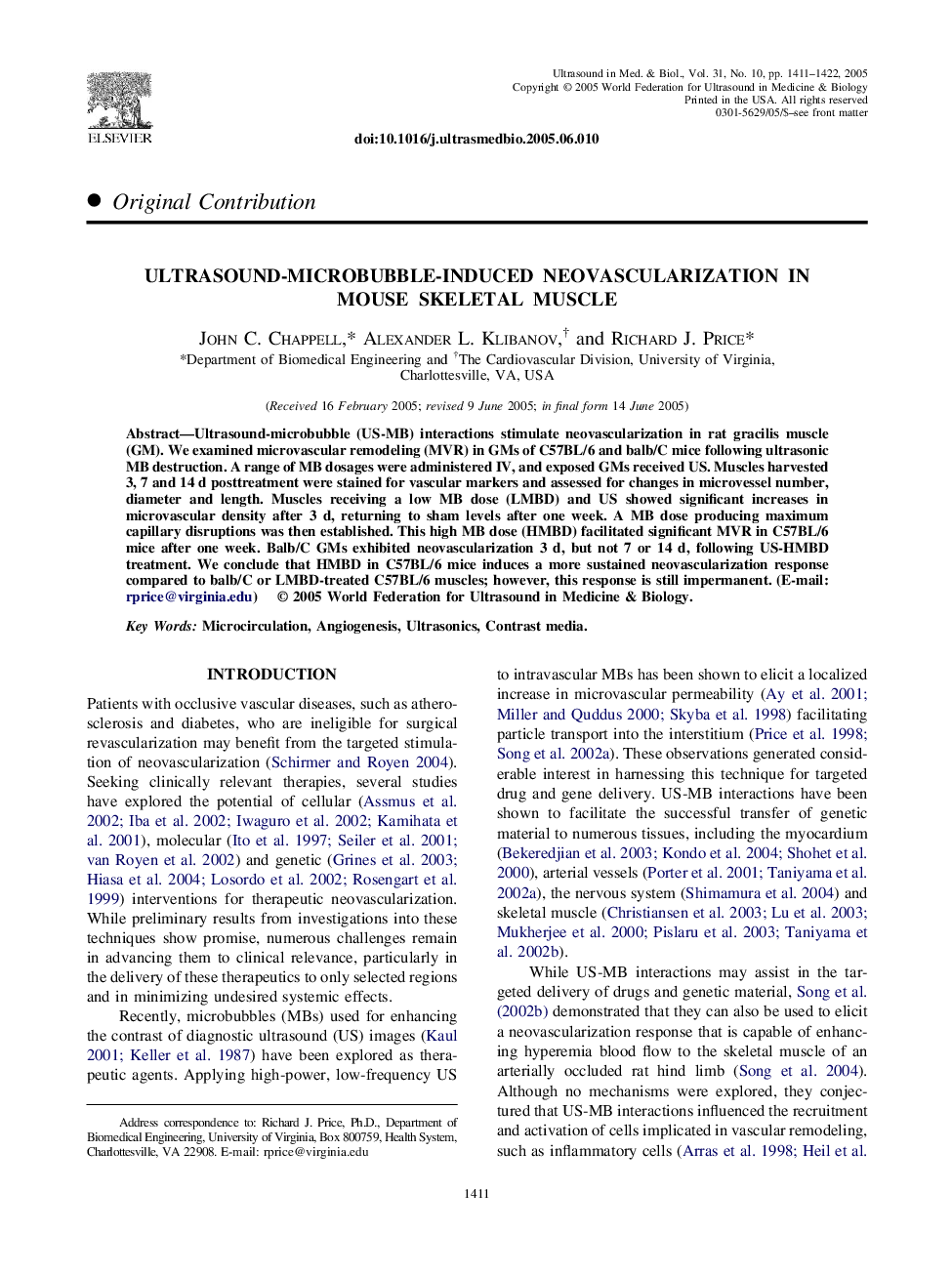| Article ID | Journal | Published Year | Pages | File Type |
|---|---|---|---|---|
| 10692487 | Ultrasound in Medicine & Biology | 2005 | 12 Pages |
Abstract
Ultrasound-microbubble (US-MB) interactions stimulate neovascularization in rat gracilis muscle (GM). We examined microvascular remodeling (MVR) in GMs of C57BL/6 and balb/C mice following ultrasonic MB destruction. A range of MB dosages were administered IV, and exposed GMs received US. Muscles harvested 3, 7 and 14 d posttreatment were stained for vascular markers and assessed for changes in microvessel number, diameter and length. Muscles receiving a low MB dose (LMBD) and US showed significant increases in microvascular density after 3 d, returning to sham levels after one week. A MB dose producing maximum capillary disruptions was then established. This high MB dose (HMBD) facilitated significant MVR in C57BL/6 mice after one week. Balb/C GMs exhibited neovascularization 3 d, but not 7 or 14 d, following US-HMBD treatment. We conclude that HMBD in C57BL/6 mice induces a more sustained neovascularization response compared to balb/C or LMBD-treated C57BL/6 muscles; however, this response is still impermanent. (E-mail: rprice@virginia.edu)
Related Topics
Physical Sciences and Engineering
Physics and Astronomy
Acoustics and Ultrasonics
Authors
John C. Chappell, Alexander L. Klibanov, Richard J. Price,
